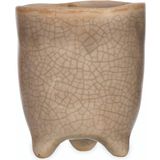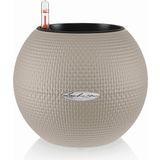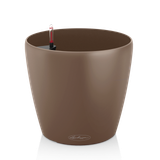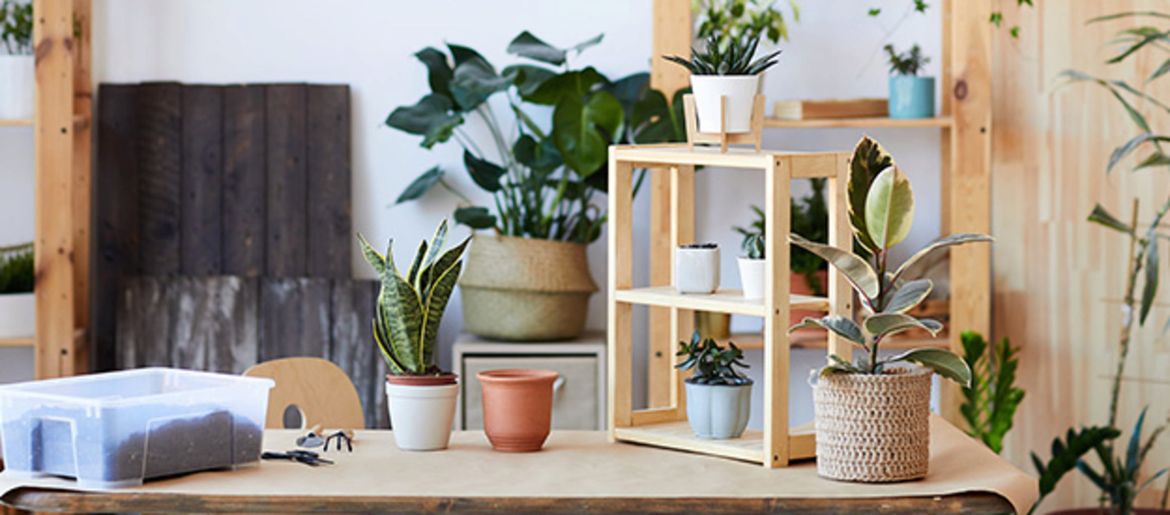Indoor plants for Better Indoor Air Quality
Nowadays, most people spend more than 80% of their time indoors. The majority of this time is spent in the bedroom at night and in the office all day.
It is no secret that the air in closed rooms is usually not as good as the air outdoors. In fact, it can be two to five times worse. This is due to an increased concentration of indoor pollutants and is exacerbated by poor air circulation. This can be addressed with the right indoor plants.
Problematic substances in the air
Every home contains many objects made from a wide variety of materials. Over time, all of these materials release pollutants into the air. Whether it is the new carpet, home textiles, paints, insulating materials, cleaning products, adhesives, electrical devices or plastics - everything can and will, to a certain extent, release substances into the air that are not exactly beneficial for your health. In addition, there are exhaust gases from vehicles and cigarette smoke.
All of these factors taken together create a mixture in the air consisting of acetone, formaldehyde, benzene, fine dust, mould spores and allergens. In the long run, such a mix of substances can trigger something called sick building syndrome or SBS. The symptoms of SBS are diverse and range from general malaise to fatigue and lack of concentration. Symptoms often improve with time spent outdoors or away from the building. SBS can lead to asthma or allergies, irritation of the eyes, nose and throat, rashes, coughing and headaches. In extreme cases, even the kidneys and liver can be affected.
Indoor plants are a remedy
Research conducted at NASA found that certain indoor plants counteract SBS by filtering the air in rooms. They absorb harmful gases and substances through their leaves that are then broken down with the help of enzymes. These are then transported to the roots, where they serve as food to a wide variety of microbes.
The best indoor plants for clean air
Some plants are particularly suitable for purifying the air and thus ensuring a good indoor air quality both at home and in the office. They are, so to speak, the super filters among plants. This includes:
- Real aloe: filters formaldehyde
- Weeping fig (Ficus benjamina): absorbs formaldehyde, benzene and trichloroethylene
- Snake Plant (Dracaena trifasciata): benzene and trichloroethylene
- Various types of Dracaena: filter formaldehyde, benzene and trichloroethylene
- Ivy: effective against benzene and trichloroethylene
- Golden pothos or Ceylon creeper (Epipremnum aureum): effective against formaldehyde, carbon dioxide and nicotine
- Spider ivy or ribbon plant (Chlorophytum comosum): filters formaldehyde and carbon dioxide
- Rubber tree: absorbs formaldehyde
- Orchids: effective against acetone
- Philodendron: against formaldehyde
- Schefflera: filters nicotine from the air
The right nutrients for optimal filtering
In order for these indoor plants to filter the air optimally, they need appropriate care and the right nutrition. Keep in mind the right location, the right temperature and ensure sufficient water supply.
How many?
The number of plants needed to adequately filter your indoor air is important. A single plant in an apartment can hardly keep up with filtering all pollutants. As a general rule of thumb, you should have at least one medium-sized plant for every 12 square metres. However, the more super filter plants you have, the better your air quality.
Related products
-
 5.0 (1)
5.0 (1)Garden Trading Positano Flowerpot - Stone, Small
-5%- Ceramic pot
- Glazed on the inside and outside
- For indoor use
£5.69 £6.00Delivery by January 06
-
 5.0 (3)
5.0 (3)Lechuza PURO Table Planter Color 20, sandy brown
- sandy brown
- White
- Slate Grey
- Complete set
- Including irrigation system
- Dimensions: 20 x 16 cm
£21.00Delivery by January 06
-
 5.0 (2)
5.0 (2)Lechuza Planter Classico Color 18, Nutmeg
-4%- Nutmeg
- White
- Sandy Brown
- Slate Grey
- Dimensions: 19 x 17 cm
- Made in Germany
- For indoor and outdoor use
£21.08 £22.00Delivery by January 06
Magazine Articles:
Discover Interismo:
-
Great Britain: Free standard delivery from £69.90
-
Free
returns -
We operate in a
climate-conscious manner. More than 11.350 products

